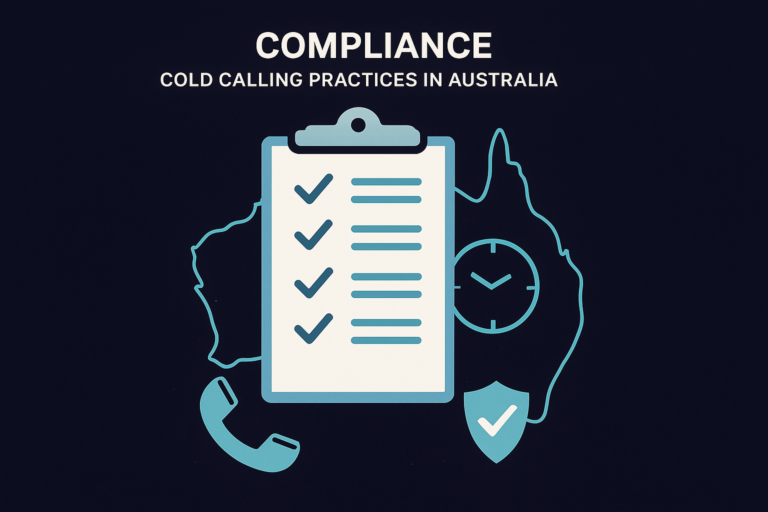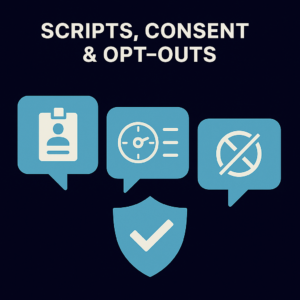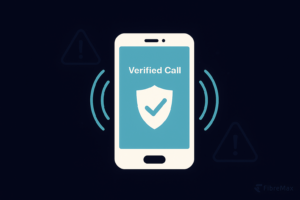—
Cold calling can still win customers—if it’s done by the book.
Australian rules exist to protect consumers and keep the phone channel trustworthy. When you follow them, you not only avoid penalties but also improve answer rates and brand perception. If you want a platform that makes compliance easier, explore FibreMax’s business phone solutions at or learn more about FibreMax here.
Why compliance matters
Compliance isn’t red tape; it’s your caller-reputation strategy. Carriers and handset ecosystems increasingly label calls based on patterns, identification and behaviour. Clear identification, lawful hours and opt-out handling signal that you’re a legitimate business, which means more calls are answered and fewer are flagged as “Spam” or “Suspicious.”
Key points
Non-compliance risks fines, blocking and reputation damage.
Consistent, transparent behaviour lifts answer rates and conversions.
The right phone system + process makes compliance automatic.
The key standards to follow
Australian telemarketing rules set minimum expectations for when you can call, how you identify yourself, and how you respect consumer preferences. Build them into your scripts, dialler settings and training so every agent does the right thing on every call.
Calling hours (local time of the called party)
“Calling hours” are the legally permitted times you may place marketing or research calls to someone, calculated in the recipient’s time zone. This prevents early-morning/evening disturbances and public-holiday calls. Configure your dialler to respect the callee’s local time and Australian public holidays to stay compliant.
Mon–Fri: 9:00–20:00
Sat: 9:00–17:00
No calls on Sundays or national public holidays.
Caller ID (CLI) requirements
CLI (Caller Line Identification) is the phone number shown to the person you’re calling. You must present a real, return-reachable Australian number (never “Private” or blocked). That number should connect to a live line/IVR/voicemail and remain reachable for at least 30 days after the call so people can contact you back.
Present a return-reachable Australian number (no blocked/hidden calls).
Keep that number available for 30 days after the call for callbacks/queries.
Identify yourself immediately
At the start of every call, clearly state who you are, the business you represent, and why you’re calling. This builds trust and meets legal obligations. If the person asks you to stop, end the call immediately—no questions, no pressure.
State your name, your company, and the purpose of the call.
End the call immediately if the person asks you to stop.
Do Not Call Register (DNCR)
The DNCR is Australia’s official list of numbers that do not wish to receive telemarketing calls. Unless you’re exempt (e.g., some charities/research), you must screen your lists against the DNCR and honour opt-outs promptly. Access is via the DNCR/ACMA portal: register your organisation as a telemarketer, purchase a subscription or credits, and upload lists (or use the API) to “wash” numbers before campaigns. Keep proof of every check.
Screen lists against the DNCR unless you are exempt.
Honour opt-outs at once and keep evidence of suppression.
Simple risk reducers
Use one stable, official business number (don’t rotate random CLIs).
Limit retries (e.g., max 2/day, several hours apart).
Keep abandon rates low (if you use a dialler).
Record-keeping that protects you
If ACMA investigates—or a carrier queries your traffic—your records show you’re playing by the rules. Make evidence collection a routine, not a scramble. Store records securely and make sure your team knows where to find them.
Maintain
DNCR checks with dates and list versions.
Scripts/disclosures used and their revision dates.
Opt-out logs (who, when, method) and suppression proofs.
Call activity (attempts, outcomes, abandonment, durations).
Simple risk reducers
Carriers dislike patterns that look robotic or deceptive. Keep your CLI stable, pace your retries, and reduce behaviours that create short or abandoned calls. These small hygiene steps meaningfully reduce the chance of warnings on recipients’ screens.
Do
Use one stable, official business number (avoid random local-presence CLIs).
Limit retries (e.g., max 2/day, spaced by several hours).
Keep abandon rates low if you use a predictive dialler.
Remove bad numbers quickly; suppress opt-outs before the next run.
Final word
The “rulebook” boils down to respectful timing, clear identification, honouring preferences and keeping clean records. Do these consistently and you’ll keep regulators satisfied, carriers cooperative and prospects receptive. Need help operationalising these controls? FibreMax can configure caller ID, call flows and logging to make compliance part of how you work.
—
TL;DR checklist
✅ Call within legal hours: Mon–Fri 9:00–20:00, Sat 9:00–17:00; no Sundays or national public holidays.
✅ Show a return-reachable CLI: Present a real Australian number and keep it reachable for 30 days after the call.
✅ Identify immediately: State who you are, your company, and why you’re calling; end the call on request.
✅ DNCR-wash your lists: Screen against the Do Not Call Register, and honour opt-outs right away (with proof).
✅ Keep records: Store DNCR checks, script versions, opt-out logs, and call activity for audit readiness.
✅ Reduce risk patterns: Use one stable number, limit retries (e.g., max 2/day, spaced hours apart), and keep abandon rates low.
.



